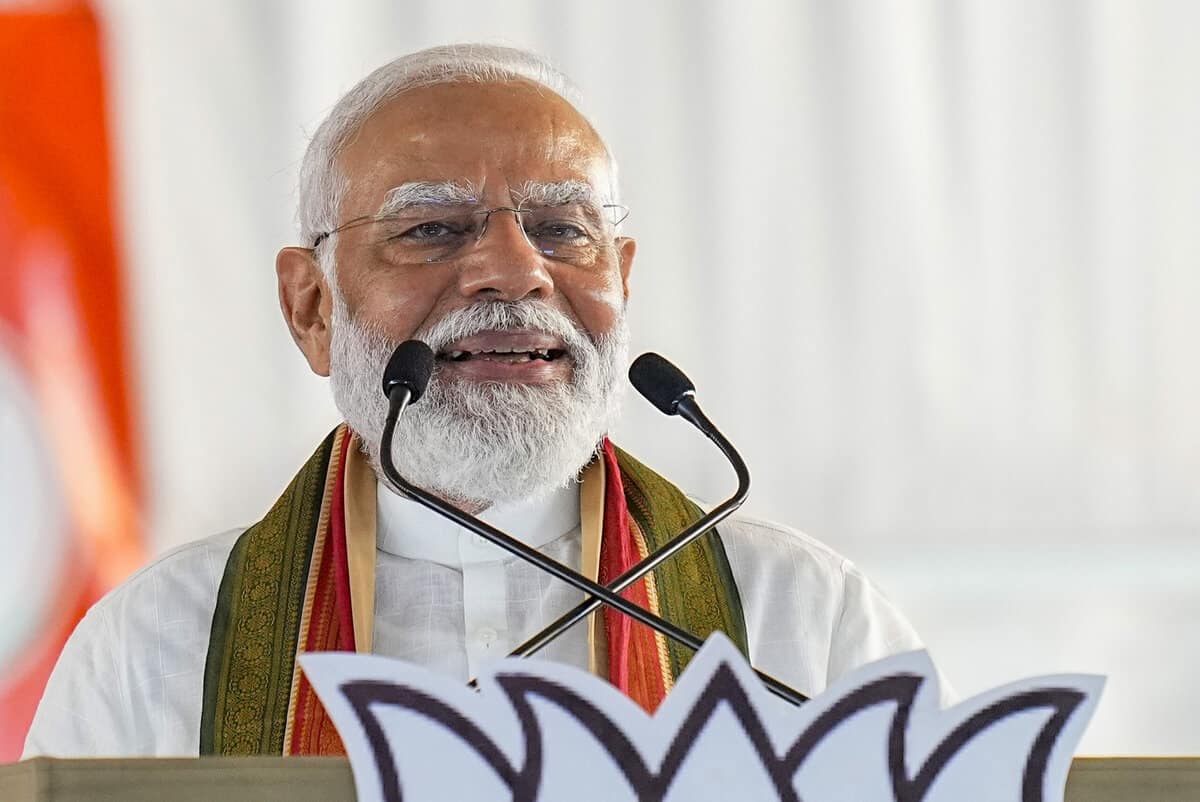
As the nation gears up for the upcoming Lok Sabha elections, the release of manifestos by major political parties offers a glimpse into their visions and promises for the future. The Congress and the BJP, two stalwarts of Indian politics, have unveiled their manifestos, each presenting a distinct approach to governance and development.
The Congress presented its manifesto, Nyay Patra, with focus on justice across various sections of the society. The manifesto, crafted after extensive consultations and deliberations, revolves around five pillars of justice: Yuva Nyay (for youth), Naari Nyay (for women), KisaanNyay (for farmers), Shramik Nyay (for workers), and Hissedari Nyay (for inclusion).
In a bid to address the pressing issues of unemployment and economic disparity, the Congress manifesto promises the right to apprenticeship for youth and a nationwide socioeconomic and caste census to ensure equitable resource distribution. Furthermore, the party pledges to raise the 50% cap on reservations for SCs, STs, and OBCs through constitutional amendments, along with implementing a 10% quota in jobs and educational institutions for economically weaker sections (EWS) from all communities.
One of the striking features of the Congress manifesto is its commitment to ensuring social security and welfare measures for the marginalised sections of society. It guarantees a legal guarantee for Minimum Support Prices for farmers, the restoration of Jammu and Kashmir’s statehood, and the implementation of the Rajasthan model of cashless insurance for universal healthcare. Additionally, the promise of a Mahalakshmi scheme, providing Rs 1 lakh per year to every poor Indian family, reflects the party’s commitment to alleviating poverty and promoting inclusive growth.
The Congress also emphasises women’s empowerment and gender equality, with proposals such as a 50% reservation of central government jobs for women from 2025 and measures to ensure equal wages, safety, and maternity benefits. Moreover, the manifesto addresses crucial issues like educational reforms, healthcare, and infrastructure development, setting ambitious targets for the nation’s progress.
Contrasting the Congress manifesto, the BJP’s Modi ki Guarantee manifesto, spearheaded by Prime Minister Narendra Modi, focused more on continuity than change and exuded confidence in the party’s track record of governance. There is also no mention of extending the production link incentive or “Make in India” schemes. The manifesto reiterates BJP’s commitment to one-nation-one-election and the Uniform Civil Code, which were outlined in the 2019 manifesto. Notably, the BJP mentioned India as “Bharat” in most places in the manifesto.
While the BJP manifesto lacks the detailed structural reforms proposed by the Congress, it emphasises the expansion and continuation of existing initiatives like the Ayushman scheme, free ration scheme, and Mudra loans. The focus remains on infrastructure development, with promises of clean drinking water for all households, free electricity for people below the poverty line, and the expansion of educational and healthcare institutions.
The BJP manifesto also outlines ambitious plans for the nation’s progress, including the bid for the Olympic Games, the introduction of bullet train corridors, and the launch of the Gaganyaan mission, Bharat’s first human spaceflight. Additionally, the party aims to strengthen national security, combat terrorism, and enhance diplomatic relations on the global stage.
The manifestos of the Congress and the BJP reflect contrasting approaches to governance and development. While the Congress emphasises social justice, inclusivity, and welfare measures, the BJP focuses on continuity, infrastructure development, and national security.
In terms of economic policies, Congress proposes structural reforms like raising the cap on reservations and ensuring MSP through legal guarantees, aiming for inclusive growth. On the other hand, the BJP prioritises infrastructure development, entrepreneurship, and innovation to propel economic growth.
Moreover, the two parties diverge in their approaches to international relations. The Congress manifesto highlights diplomatic resolutions and restoring territorial integrity, especially concerning China and Pakistan. In contrast, the BJP manifesto underscores national security measures and infrastructure development along the borders to combat external threats.
The Congress and BJP manifestos present differing approaches to tackling the pressing issue of youth unemployment in India. The Congress, through its Nyay Patra manifesto, proposes comprehensive measures to address the challenge of youth unemployment. It pledges to enact the Right to Apprenticeship Act, ensuring every diploma holder or graduate under the age of 25 receives a one-year apprenticeship. Additionally, the party promises to fill nearly 30 lakh vacancies in sanctioned posts at various levels in the central government, providing opportunities for youth employment.
Conversely, the BJP’s Modi ki Guarantee manifesto emphasises continuity and expansion of existing schemes to tackle youth unemployment. The party aims to hike the Mudra loan limit and introduce more IITs, IIMs, and AIIMS, focusing on skill development and infrastructure development as avenues for employment generation. Furthermore, the BJP promises to provide free electricity to poor households and expand schemes like PM Awas Yojana and PM Ujjwala Yojana, aiming to uplift the socioeconomic status of marginalised communities and create job opportunities.
Both the Congress and the BJP have outlined significant measures aimed at empowering women in their respective manifestos. The Congress manifesto emphasises gender equality with proposals such as a 50% reservation of central government jobs for women from 2025, along with measures to ensure equal wages, safety, and maternity benefits. While the BJP aims to create opportunities for women through economic growth and infrastructure development, the Congress places a stronger emphasis on affirmative action and social justice measures to bridge gender disparities.
In conclusion, the manifestos of the Congress and the BJP offer distinct visions for India’s future, reflecting the ideological differences between the two parties. As the nation heads into the elections, these commitments serve as crucial steps towards realising the aspirations of millions across the country. In this dynamic interplay between promises and power, the true measure of leadership lies not in the eloquence of words inscribed on paper but in the relentless pursuit of their realisation for the betterment of all Indians.
Mohammed Amaan Khan is a Research Fellow at the Centre for Development Policy and Practice (CDPP) and an aspiring economist who graduated with honours from Symbiosis School of Economics, earning a B Sc in Economics.

